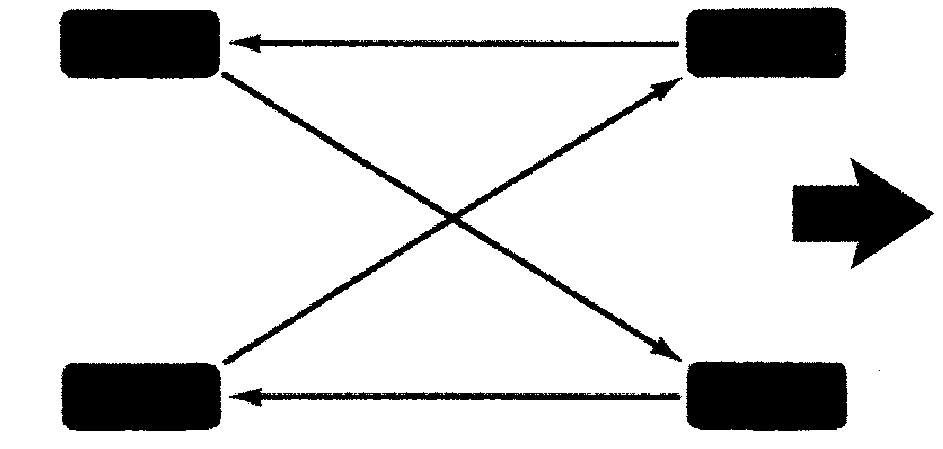We recommend that you regularly inspect the vehicle's tires, including the spare tire, if the vehicle has one, for signs of wear or damage. See When It Is Time for New Tires for more information.
Tires should be rotated every 5,000 to 8,000 miles (8 000 to 13 000 km). See Scheduled Maintenance .
If this vehicle has P225/40R18 size tires, they should be rotated every 3,000 miles (5 000 km).
The purpose of a regular tire rotation is to achieve a uniform wear for all tires on the vehicle. This will ensure that the vehicle continues to perform most like it did when the tires were new.
Any time you notice unusual wear, rotate the tires as soon as possible and check wheel alignment. Also check for damaged tires or wheels. See When It Is Time for New Tires and Wheel Replacement .

When rotating the vehicle's tires, always use the correct rotation pattern shown here.
Do not include the compact spare tire, if the vehicle has one, in the tire rotation.
After the tires have been rotated, adjust the front and rear inflation pressures as shown on the Tire and Loading Information label. See Inflation - Tire Pressure and Loading the Vehicle .
If the vehicle has the Tire Pressure Monitor System (TPMS), reset the TPMS sensors after rotating the tires. See Tire Pressure Monitor Operation .
Make certain that all wheel nuts are properly tightened. See "Wheel Nut Torque" under Capacities and Specifications .
Caution: Rust or dirt on a wheel, or on the parts to which it is fastened, can make wheel nuts become loose after time. The wheel could come off and cause an accident. When you change a wheel, remove any rust or dirt from places where the wheel attaches to the vehicle. In an emergency, you can use a cloth or a paper towel to do this; but be sure to use a scraper or wire brush later, if needed, to get all the rust or dirt off. See Changing a Flat Tire .
